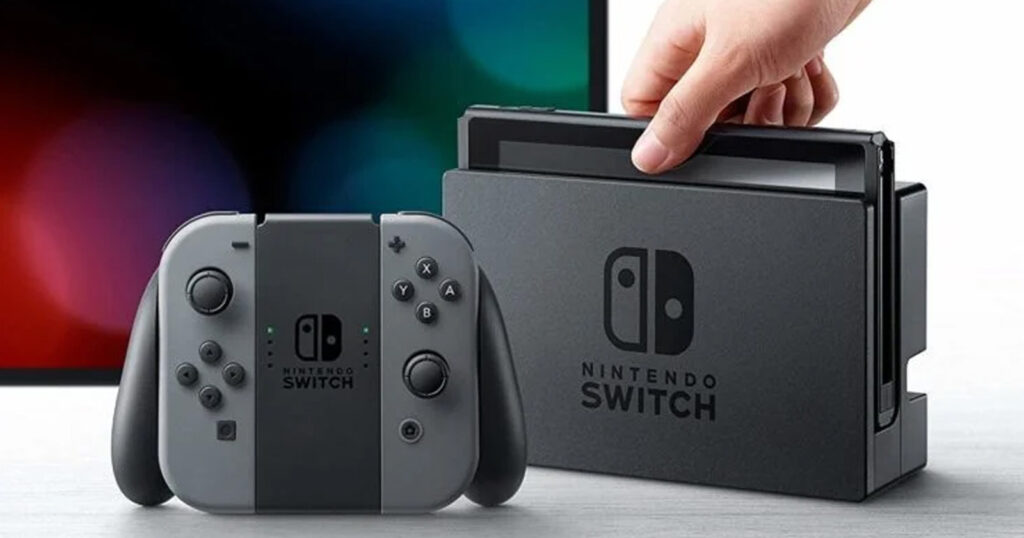
As Nintendo prepares for the highly anticipated launch of the Switch 2, questions are emerging about the possibility of moving production to the United States, particularly in light of the ongoing trade tensions and tariffs under the Trump administration. Could Nintendo escape the rising tariffs that have impacted its manufacturing costs? The answer might not be as straightforward—or as quick—as fans would hope.

The Timeframe for Moving Switch 2 Production to the U.S.
If Nintendo were to relocate the production of its Switch 2 to the U.S. in order to avoid tariffs, the timeline would be much longer than most people would expect. The logistics involved in such a move are staggering, and the process would likely take years rather than months. Joseph Foudy, a professor of economics at New York University Stern School of Business, provided insight into just how complicated this shift would be.
“Such a move would take years,” Foudy explained to Polygon. “Nintendo would have to set up a final assembly factory in the U.S., which means finding land, building a facility, and recruiting a workforce.” These hurdles are not unique to Nintendo; Apple has faced similar challenges as it works to diversify its manufacturing outside of China.
For Nintendo, this means not only finding an appropriate location but also significantly investing in infrastructure, labor, and supply chain logistics, all of which would take a considerable amount of time. Even though some of the company’s production already takes place in countries like Vietnam and Cambodia, moving it to the U.S. would introduce a whole new set of challenges.
The Cost and Logistical Challenges of U.S. Manufacturing
Currently, Nintendo produces more than half of its hardware in Southeast Asia, primarily in Vietnam and Cambodia, with the remainder in China. Moving production to the U.S. would involve more than just shifting the final assembly of the Switch 2—it would require the manufacturing of all components domestically. This process could dramatically increase the cost of production due to the higher wages and operational costs in the U.S.
A report from Bank of America on Apple’s manufacturing costs highlighted just how expensive it could be for U.S.-based manufacturing. “If Apple were to move production to the U.S., the cost to make an iPhone could nearly double,” the report stated. For Nintendo, the situation is no different. The cost of building out U.S.-based facilities and producing all components locally would likely drive up the price of the Switch 2 significantly.
To completely avoid tariffs, Nintendo would need to establish multiple factories in the U.S. to produce every single part of the Switch 2. This would stretch the timeline even further and significantly increase the overall investment required.

The Ongoing Impact of Tariffs
In an effort to minimize the impact of tariffs, Nintendo has already shifted some of its production from China to Vietnam and Cambodia, which helped mitigate the effects of the 125% tariff that was imposed on Chinese imports. This decision, made roughly six years ago, has allowed Nintendo to keep manufacturing costs lower than they might have been if it had continued to rely solely on China.
However, the issue with tariffs remains complicated. As of the latest news, President Trump has reduced tariffs for every country except China, but the future of these tariffs remains uncertain. Should the tariff structure revert to its original levels, Nintendo would again face steep costs on its imports from Vietnam and Cambodia.
Foudy also noted that Nintendo’s best hope might be in negotiating a partial trade deal with the U.S. administration or seeking industry-wide exemptions to the tariffs. But as he acknowledged, these scenarios remain highly uncertain. “It’s impossible to guess the chances of either,” Foudy added.
What This Means for the Switch 2’s Price
The ongoing tariff situation has also raised concerns about the eventual price of the Switch 2. While Doug Bowser, President of Nintendo of America, has claimed that tariffs won’t affect the final price of the console, analysts aren’t so sure. According to DFC Intelligence’s CEO, there’s a possibility that the tariffs have already been factored into the price, with predictions that the Switch 2’s cost will remain steady when pre-orders go live.
However, if the tariffs continue to escalate or the temporary tariff pause comes to an end, consumers could see a significant price increase for the Switch 2. Some analysts have even warned that if Nintendo were to pass on the increased costs to consumers, the price of the Switch 2 could rise to $600 or more.
As a comparison, Apple’s iPhones could see price increases of 30% to 40% if the tariffs on China-made components are fully applied, and similar effects could be expected for Nintendo’s hardware.

The Reality of the Situation: A Ship in a Storm
So, could Nintendo realistically move Switch 2 production to the U.S. before its launch in June? The answer is clear: It would take far too long, and the financial investment would be prohibitive. As Foudy aptly put it, “Nintendo, like a lot of manufacturers, is a ship in a storm that is struggling not to get hit by a big wave as best it can, but has little control over its fate.”
At this point, it seems unlikely that Nintendo will relocate its production before the Switch 2’s June release. While the company may continue to explore alternative manufacturing solutions in the future, the short-term focus will likely be on navigating the current tariff environment and working with its existing suppliers in Southeast Asia.
In conclusion, while the idea of moving Switch 2 production to the U.S. may sound appealing for the sake of avoiding tariffs, the reality is that the logistics, costs, and time required to make such a move are simply too great. Nintendo is stuck in a precarious position, and unless significant changes are made to the tariff situation, it’s unlikely that we’ll see U.S.-based production anytime soon. Fans can expect the Switch 2 to be assembled overseas for now, with the company continuing to navigate the challenges posed by the global trade landscape.
